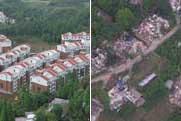China
Tibetan officials urge people to learn more about Tibet´s past
But according to a white paper on Tibet's democratic reform published earlier this year, the illiteracy rate in the region has dropped to 2.4 percent last year.
More than 98.5 percent of the Tibetan children had access to primary schools, 92.5 percent to junior high schools, and 51.2 percent to senior high schools.
"I was 15 in the 1959. But I could not go to school until after the democratic reform," he said.
"The Dalai Lama has tried to describe an old Tibet in which people enjoy better lives than now. But facts cannot be denied, and history cannot be fabricated," he said.
This year is the 50th anniversary of the region's Democratic Reform. In 1959, Tibetan serfs and slaves, who accounted for more than 90 percent of the region's population, were freed after the central government foiled an armed rebellion staged by the Dalai Lama and his supporters.
Tibet's democratic reform is an important chapter in the history of international human rights. It is no less significant than the abolishment of slavery in the United States and Europe, said the Tibetan official.
Editor:Liu Anqi



